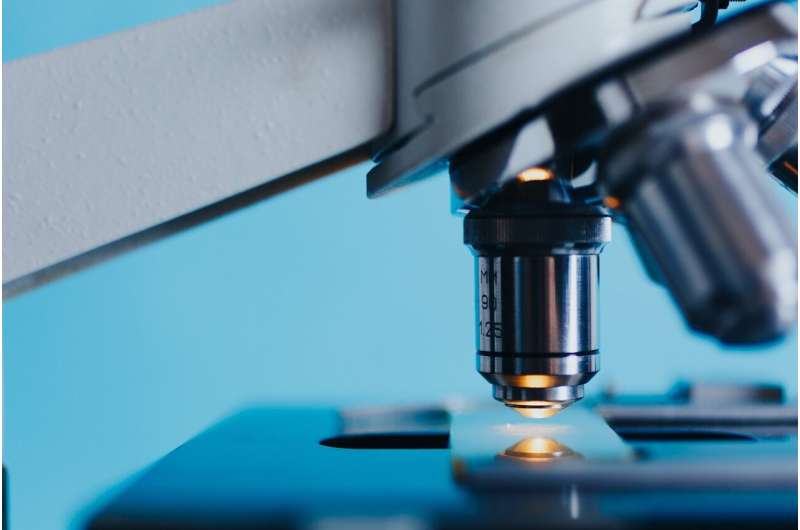This article has been reviewed according to Science X's editorial process and policies. Editors have highlighted the following attributes while ensuring the content's credibility:
fact-checked
trusted source
proofread
Computational microscope achieves 3D high-resolution imaging with a wide field of view

Researchers report new upgrades to a computational miniature mesoscope that enable single-shot, 3D high-resolution imaging with a wide field of view. The simple, low-cost miniature instrument could be useful for a wide range of large-scale 3D fluorescence imaging and neural recording applications.
Qianwan Yang from Boston University will present this research at the Optica Imaging Congress. The hybrid meeting will take place August 14–17, 2023, in Boston, Massachusetts.
"Freely moving animal neural recording is vital as functional brain interactions change with motivation and behavior. The mesoscope aims to measure activity across the full extent of the cortex of mice at cellular resolution as animals engage in complex, cognitively demanding behaviors. Fluorescence microscopy is commonly used to study biological structures and dynamics, but most microscopes require a trade-off between field of view, resolution and system complexity," explains Yang.
"To overcome the limits of the microscope, Professor Tian from Boston University and his group developed a computational miniature mesoscope (CM2)—a microscope with both a high spatial resolution and a large field of view. The instrument is based on computational imaging, which combines imaging hardware and computational algorithms to accomplish otherwise impossible imaging capabilities."
The researchers recently upgraded their mesoscope by adding new miniature optics that greatly improve light throughput and image contrast. They also developed a new deep learning model that significantly improves axial resolution and reconstruction speed. The resulting system is simple and low cost thanks to the off-the-shelf and 3D-printed components used.
The hardware upgrades included miniature LED collimators based on freeform optics and fabricated using a clear resin and tabletop 3D printer. By adding the new collimators—each weighing just 0.03 grams—to the instrument's four-LED array illuminator, the light efficiency reached approximately 80%. This update also produced a highly confined, uniform illumination with up to 75 mW excitation power across an 8-mm diameter circular region. The researchers boosted image contrast by incorporating a new hybrid emission filter that combines interference and absorption filters.
The new deep learning model optimizes the computational aspects of image formation to enable high-quality 3D imaging across a wide field of view. The algorithm enhanced the axial resolution to approximately 25 μm, about eight times better than the method previously used for reconstruction, while also reducing reconstruction time to less than 4 seconds for a volume with a 7 mm field of view and a 0.8 mm depth.
Yang added, "Future work will focus on addressing the outstanding challenge of tissue scattering. We envision exploring promising solutions like the miniature structured illumination techniques and scattering-incorporated 3D reconstruction frameworks to expand the utility of CM2."
Provided by Optica




















